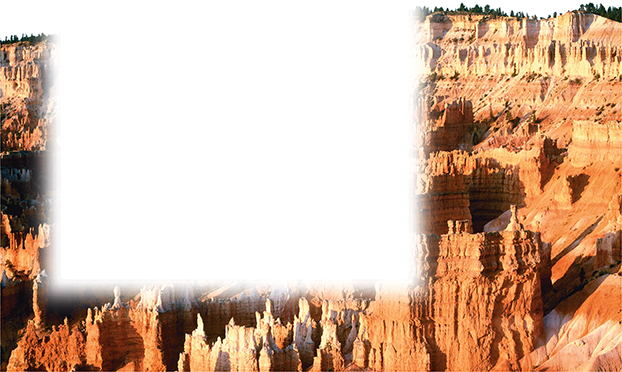23.2 Weathering and Mass Movement
Reading Focus
Key Concepts
 What are the agents of erosion?
What are the agents of erosion? What causes mechanical and chemical weathering?
What causes mechanical and chemical weathering? What factors affect the rate at which rocks weather?
What factors affect the rate at which rocks weather? What force causes mass movement?
What force causes mass movement?
Vocabulary
erosion
weathering
mechanical weathering
abrasion
chemical weathering
mass movement
Reading Strategy
Concept Map As you read, draw a concept map showing the key factors that affect the rate of weathering.

Imagine walking through a pine forest in southern Utah. Suddenly your trail twists, leading you to the edge of a canyon. The curved end of the canyon is shaped like a huge football stadium. But instead of cheering sports fans, this stadium is full of strange columns of rock in yellow, brilliant orange, and rusty red. You are looking at Bryce Canyon, which is famous for its fantastic rock formations, called “hoodoos.” The hoodoos are made of different types of sedimentary rock.
Millions of years ago, what is now Bryce Canyon was solid layers of rock. Very slowly, much of this rock was broken down and worn away until only the hoodoos were left standing.
Erosion
Bryce Canyon formed by erosion, the process that wears down and carries away rock and soil. Erosion cuts canyons through solid rock and wears away the cliffs above beaches.
Erosion is the destructive process that has shaped Earth's surface over hundreds of millions of years.  Erosion acts through weathering, the force of gravity, and through the movement of streams, groundwater, glaciers, wind, and waves. Over time, erosion breaks down even the tallest mountains. The end product of erosion is sediment. Recall that sediment is composed of particles of rock and soil and the remains of living things.
Erosion acts through weathering, the force of gravity, and through the movement of streams, groundwater, glaciers, wind, and waves. Over time, erosion breaks down even the tallest mountains. The end product of erosion is sediment. Recall that sediment is composed of particles of rock and soil and the remains of living things.
Figure 7 Incredible rock formations called hoodoos can be seen at Bryce Canyon National Park in Utah.





